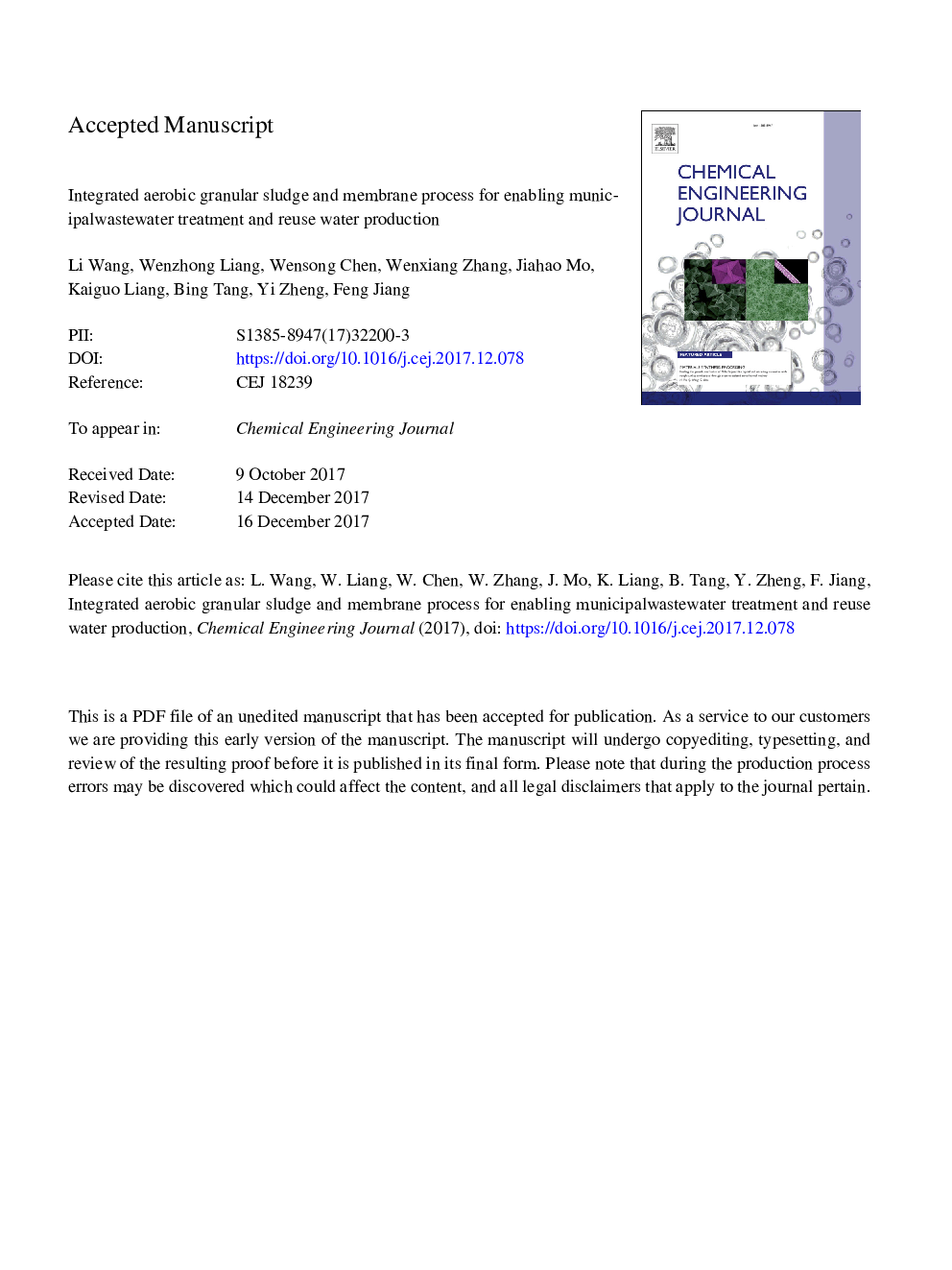| Article ID | Journal | Published Year | Pages | File Type |
|---|---|---|---|---|
| 6580430 | Chemical Engineering Journal | 2018 | 27 Pages |
Abstract
Aerobic granular sludge (AGS), as an aggregate of numerous self-immobilized functional microorganisms, has been recognized as an increasingly viable option for wastewater treatment and reuse water production. This study aimed at evaluating the application of AGS reactor as primary, ultrafiltration (UF) as secondary and nanofiltration (NF) as tertiary treatment for the treatment of municipal wastewater, focusing on determining the membrane fouling mechanism and reuse water production. AGS reactor, UF and NF exhibit high removal efficiency for COD (51.33%, 90.48% and 99.26%) and nutrients (53.63%, 94.84% and 98.06% total nitrogen, and 49.8%, 97.07% and 98.73% phosphorus), indicating that the integrated aerobic granular sludge and UF/NF process could provide high pollution removal and quality reuse water. As for filtration behavior of UF and NF, shear stress produced by agitation speed could significantly improve flux, due to the dispersion of pollutants. Besides, for AGS, improved simultaneous nitrification and denitrification by the internal anaerobic, anoxic, and aerobic structure and the richer biological community increased foulant removal, while the larger pore size and mature structure also reduced foulant deposition. Moreover, shear stress also diminished the total fouling resistance, reversible fouling and irreversible fouling, as well membrane cleaning efficiency was promoted, by controlling AGS deposition on membrane. In addition, the fouling mechanism of conventional floc sludge and that of AGS were deeply analyzed and respectively compared, from three aspects, namely, Scanning Electron Microscope (SEM), Attenuated Total Reflection Fourier Transform Infrared Spectroscopy (ATR-FTIR) and Atomic Force Microscope (AFM). Overall, the results demonstrated an alternative option for water treatment and reuse water production in an integrated AGS and membrane process.
Related Topics
Physical Sciences and Engineering
Chemical Engineering
Chemical Engineering (General)
Authors
Li Wang, Wenzhong Liang, Wensong Chen, Wenxiang Zhang, Jiahao Mo, Kaiguo Liang, Bing Tang, Yi Zheng, Feng Jiang,
